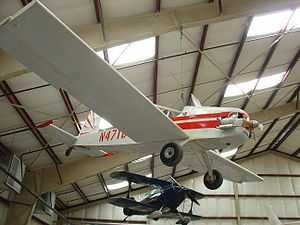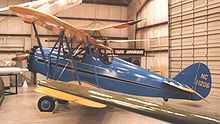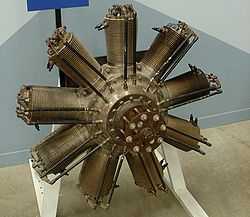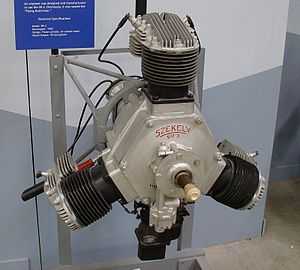Pima Air & Space Museum
.jpg)
Shenyang F-6A (MiG-19), ex-Egyptian Air Force. Combatant in the
Vietnam War.
The Pima Air & Space Museum, located in Tucson, Arizona, is one of the world's largest non-government funded aerospace museums. The museum features a display of nearly 300 aircraft spread out over 80 acres (320,000 m²) on a campus occupying 127 acres (610,000 m²). It is also, since 1991, home to the Arizona Aviation Hall of Fame.
Opened to the public in May 1976 with 48 aircraft then on display, the Museum's main hangar houses an SR-71A Blackbird, an A-10 Warthog, a United States Air Force Through the Years exhibit, and a mock-up of a control tower.
The museum is adjacent to Davis-Monthan Air Force Base. The 309th Aerospace Maintenance and Regeneration Group (AMARG), affiliated with the base, also known as the "Graveyard of Planes" or "The Boneyard", is the largest aircraft storage and preservation facilities in the world. Bus tours of the boneyard leave from the museum several times a day from Monday to Friday, except Federal holidays.
The nearby Titan Missile Museum is located about 20 miles south of Tucson in Green Valley off of Interstate 19 and features a Titan II intercontinental ballistic missile still in its silo. Tours of the above-ground and underground installations around the missile are conducted daily. More extensive "top to bottom" tours take up to five hours and are conducted several times each month. Reservations required for top to bottom tour.
Both museums are overseen by the Arizona Aerospace Foundation and are governed by the Board of Trustees. They are non-profit 501 (c) 3 organization that relies on visitors paying admissions, for trams and AMARG tours, as well as what they spend in the Museum stores. They also rely on memberships and contracted events to pay to restore and acquire exhibits.
Aircraft and exhibits on display
Hangar 1 North
_(8744489014).jpg)
Taylorcraft TG-6 glider, U.S. Army
- Aircraft
- Aerosport Quail
- Bede BD-5J Micro-jet
- Bellanca 14-13-2 Cruisair
- Bowers Fly Baby
- Cassutt Pylon Racer
- Curtiss O-52 Owl
- Evans VP-1 Volksplane
- Flagor Sky scooter
- Gyrodyne GH-50C Dash
- Learjet Model 23
- McCulloch HUM-1
- MuCullcoh Super J-2 Gyrocopter
- Mitchell/Warr B-10 Bitchell Wing
- Northop MQM-57 Falconer
- Pacifica Airwave Model 89 Kiss
- Pentecost hoppicopter
- Piper J-4A Cub Coupe
- Pitts SpecialS-1C
- Rutan Long EZ
- Scheibe III-B Zuzvogel
- Starr Bumble Bee
- Taylorcraft BC-12D
- Taylorcraft L-2M Grasshopper
- WACO RNF
- WACO ZKS-6
- Wright 1903 Flyer (replica)
| Aircraft on display in Hangar 1 North |
|---|
|
- Aircraft Engines
| Aircraft engines on display in Hangar 1 North |
|---|
|
Hangar 1 South - The Spirit of Freedom Hangar
- Aircraft
Hangar 3
_(8744466806).jpg)
Ryan PT-22 Recruit trainer, U.S. Army
.jpg)
Douglas A-26C Invader
- Aircraft
- Beechcraft AT-11 Kansan
- Cessna UC-78B Bobcat
- Consolidated B-24J Liberator
- Culver PQ-14B Cadet
- Douglas C-47 Skytrain
- Douglas A-26 Invader (A-26C)
- Fairchild PT-19A Cornell
- Fairchild PT-26 Cornell
- Fieseler Fi-103-A1 V-1 Buzz Bomb
- Fieseler Fi 156 Storch
- Focke-Wulf Fw 44J Stieglitz
- Globe KD6G-2
- Hawker Hurricane MK.II
- Mosaine-Saulnier MS-500 Criquet
- North American B-25J Mitchell
- RadioPlane OQ-19
- Ruhrstahl SD 1400 Fritz X
- Ryan PT-22 Recruit
- Schweizer TG-3A
- Taylorcarft TG-6
- WACO UPF-7
- WACO CG-4A (nose) Hadrain.
- 20th Air Force Memorial
- 376th Bomb Group
- Aircraft Nose Art & Markings
- 406th Fighter Group
Hangar 4
.jpg)
Boeing B-29 Superfortress 44-70016
.jpg)
P-51D Mustang USAAF 44-63272
- Aircraft
- Bell HTL-2 Sioux
- Bell P-63E Kingcobra
- Boeing B-29 Superfortress
- Boeing PT-17 Kaydet
- Curtiss C-46D Commando
- Grumman FM-2 Wildcat
- Grumman TBM Avenger TBM-3E
- Nakajima Ki-43IIb Hyabusa
- Vought F4U-4 Corsair
- P-51D Mustang
- Pratt & Whitney R-4360 Wasp Major engine
- Naval Aircraft Factory N3N
- 315th Bomb Wing
- China Burma India Theatre
- 20th Air Force Memorial
Hangar 5 - satellite aircraft restoration facility and main restoration facility
- Aircraft in restoration as of October 2012
_%22I%60ll_Be_Around%22_(cn_8737)_USAAF._(8215360373).jpg)
Boeing B-17G Flying Fortress USAAF 44-85828 "I'll Be Around"
390th Memorial Museum
- Aircraft
- Boeing B-17G Flying Fortress
WWII Barracks
- Aircraft
- Model Display
Space Gallery
- Aircraft, Rockets, & Other Exhibits
- Arizona Aviation Hall of Fame
- Moon Rock Exhibit
Apollo Program Space Suit
Outdoor exhibits
| Aircraft on display outside |
|---|
| Boeing B-52G BUFF 58-0191 |
| Kaman OHD-43 Huskie helicopter |
|
.jpg)
The Boneyard Project was created by Eric Firestone and used retired military aircraft from Tucson scrapyards as canvasses for contemporary artists. These three ex US Navy Douglas C-117Ds became (from left to right) 'Time Flies By' by How & Nosm [17102], 'Warning Shot' by Retna [50808] and 'Phoenix in Metal' by Nunca, [17177]. 2014 photo.
See also
References
External links
|
|---|
| | General | |
|---|
| | Military | |
|---|
| | Accidents / incidents | |
|---|
| | Records | |
|---|
| | Misc. | |
|---|
|
Coordinates: 32°8′24.34″N 110°51′53.19″W / 32.1400944°N 110.8647750°W / 32.1400944; -110.8647750

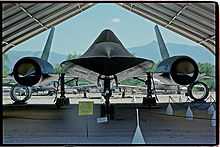
.jpg)
_US_Navy_(8737926311).jpg)
_(8744489014).jpg)


.jpg)
.jpg)
_(8744466806).jpg)
.jpg)
.jpg)
.jpg)
_%22I%60ll_Be_Around%22_(cn_8737)_USAAF._(8215360373).jpg)

_Pima_10.05R.jpg)
.jpg) AV-8 Harrier USMC 159241
AV-8 Harrier USMC 159241.jpg) Convair B-58A Hustler 61-2080
Convair B-58A Hustler 61-2080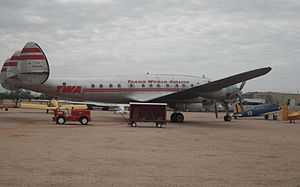
.jpg) Boeing B-52G BUFF 58-0191
Boeing B-52G BUFF 58-0191.jpg) Kaman OHD-43 Huskie helicopter
Kaman OHD-43 Huskie helicopter.jpg) Nose art on a B-52
Nose art on a B-52.jpg)
